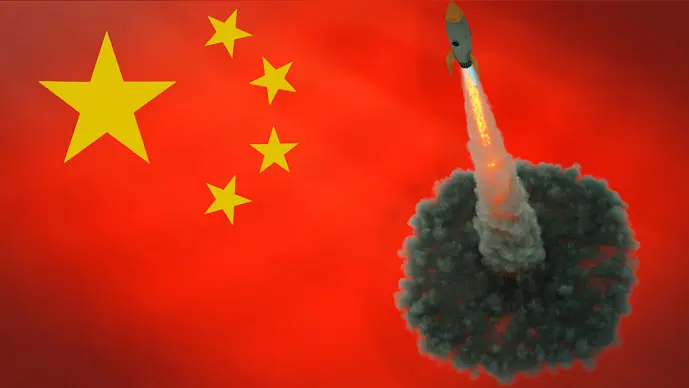
Written by staff writer.
China has carried out its first successful landing of a vertical rocket at sea, a critical step in that country developing its own sovereign reusable rocket capability.
According to China’s state-run Global Times, CAS Space, a commercial spaceflight firm partly owned by the Chinese Academy of Sciences (CAS), successfully launched and landed the 2.1-metre-long rocket prototype at Haiyang in Shandong Province on March 30.
A CAS spokesperson told the outlet that the twin turbojet rocket flew at approximately 1,000 metres for ten minutes before touching down on the at-sea landing pad. Reportedly, controllers reduced the rocket’s speed to two metres per second in the final stage, and the landing precision was under ten metres.
Lian Jie, a senior CAS engineer, told the outlet that the 93-kilogram rocket’s two engines each delivered 550 newtons of thrust and that the turbojet engines were used to simulate a variable thrust liquid rocket engine during landing.
“This kind of rocket recovery technology at sea would be widely applied to future rocket models, including the Lijian-3 and Lijian-3 heavy lift launchers and will contribute to China’s future larger-scale space exploration with further reduced costs,” he said.
China’s reusable rocket technology lags behind international competitors such as SpaceX, who have been landing and reusing rockets since 2016. Lian says the CAS rocket used China-developed software and hardware technology in its build. “We are exploring technology thresholds such as the variable thrust management, precision positioning and the stabilizing technology on our own,” he said. Developing a sovereign capability to launch reusable rockets and land them on sea platforms is expected to save China’s space industry significant amounts of money while also offering operators such as CAS considerable commercial opportunities.
Just days after the successful landing of the rocket at Haiyang, a Chinese private launch company sent a liquid propellant rocket into orbit for the first time.
Tianlong-2, or Sky Dragon-2, lifted off using a transport erector launcher at the Jiuquan Satellite Launch Center on April 2, taking a small remote sensing experiment satellite into space.
In doing so, Beijing Tianbing Technology Co., Ltd, better known as Space Pioneer, became the first private Chinese company to successfully send its own rocket into space. The launch was considered a major milestone in the development of China’s indigenous private sector space capabilities.
“Tianlong-2 is the first liquid launch vehicle in the world to use coal-based aerospace kerosene as fuel for flight,” said Beijing Tianbing Technology Co., Ltd in a statement. “As a medium-sized launch vehicle, Tianlong-2 has outstanding advantages in meeting China’s low-cost, high-reliability small satellite and constellation launch requirements.”
Meanwhile, Lian says the prototype CAS rocket could have its first flight into near orbit as soon as the end of the year. Down the track, China is looking to compete with entities such as SpaceX, not only in terms of reliability, but also on price. China’s Long March rockets can currently carry cargo into space for approximately USD3,000 per kilogram. It is hoped that in the coming years, the development of alternatives, such as the CAS reusable rockets, will get that cost down to around USD150 per kilogram.





